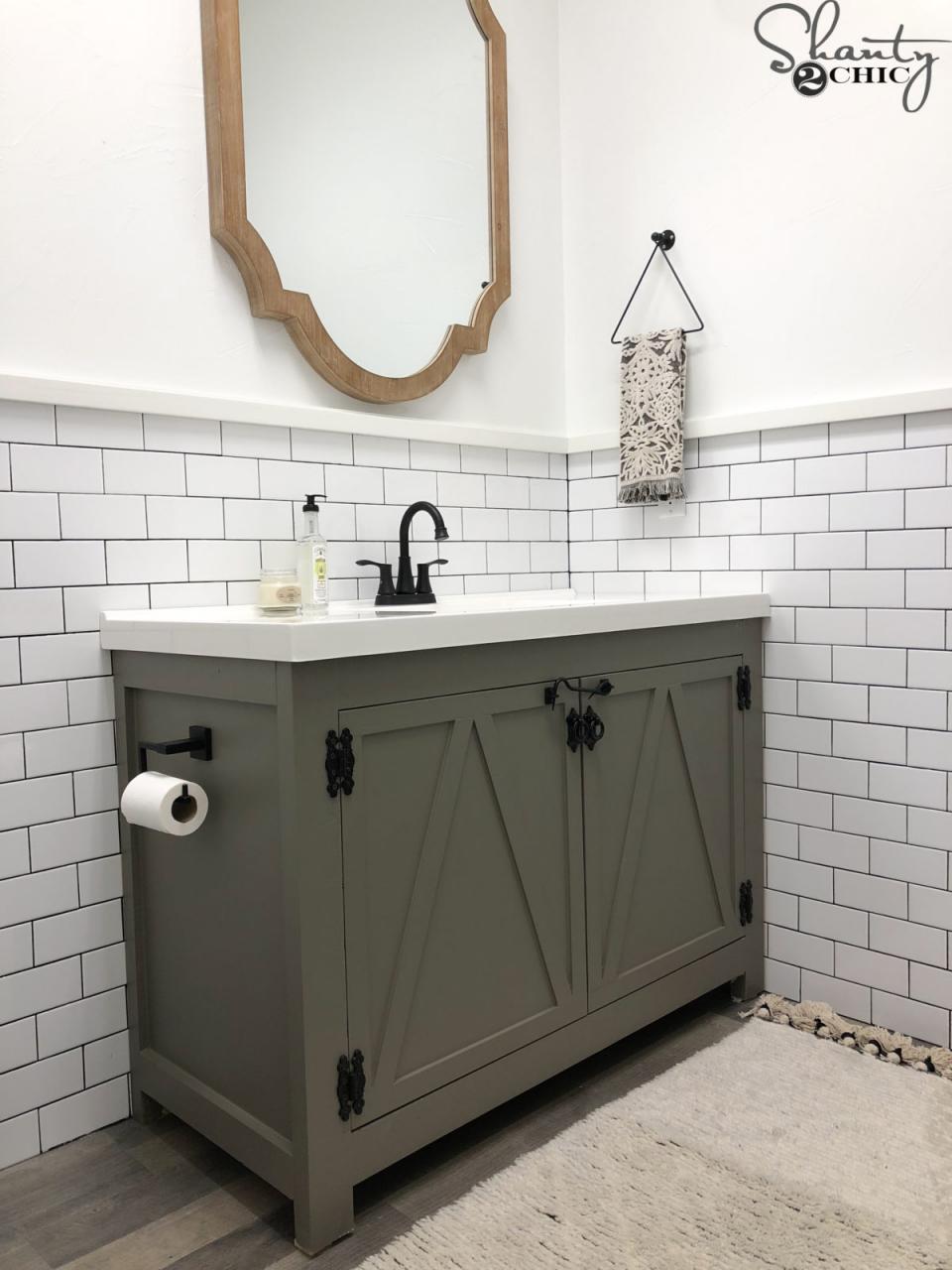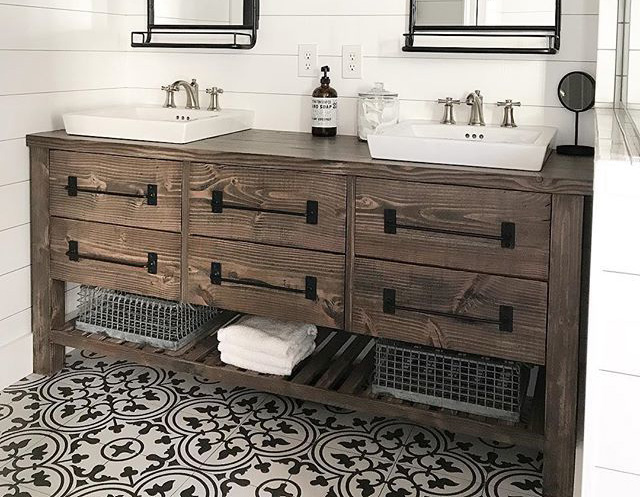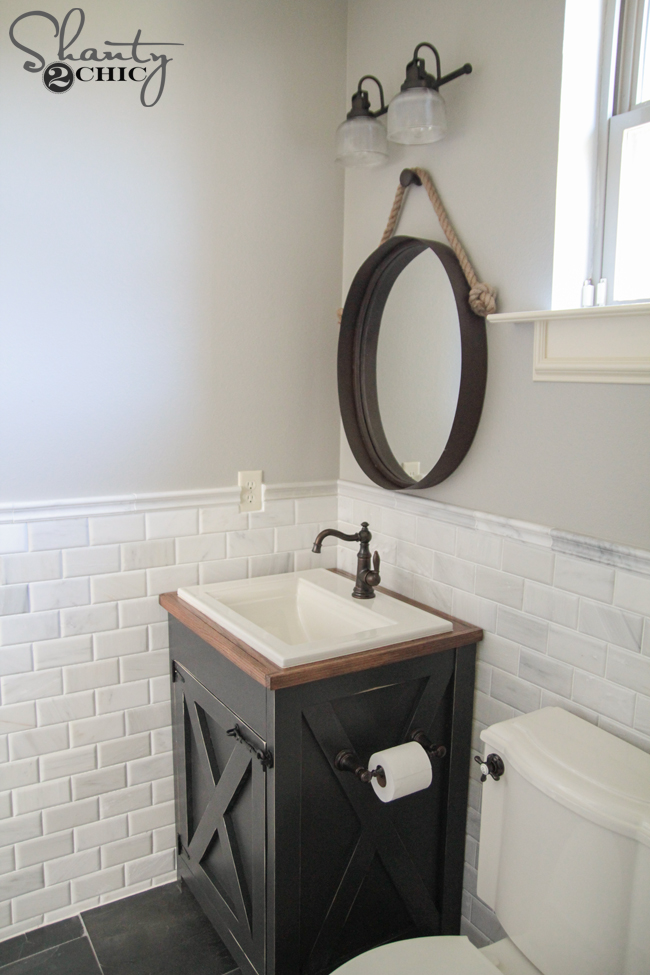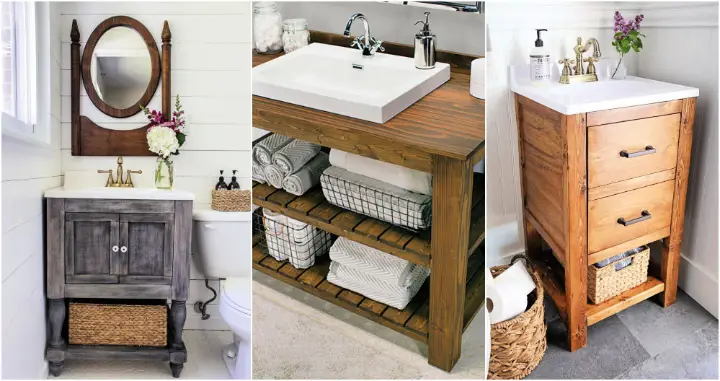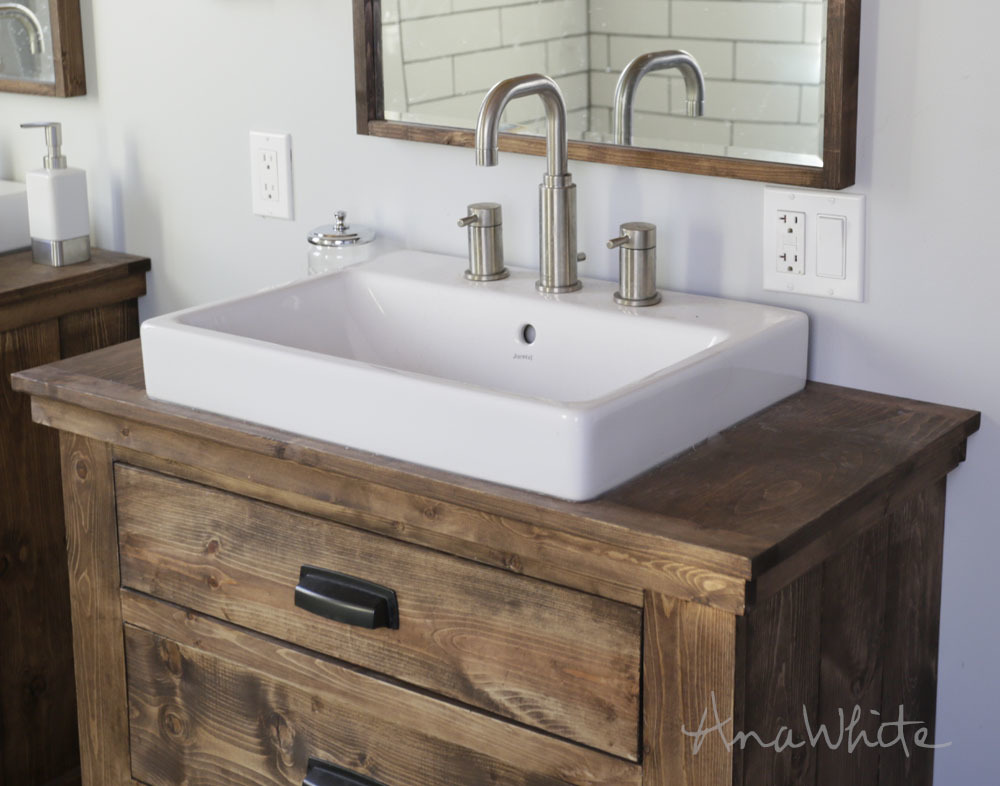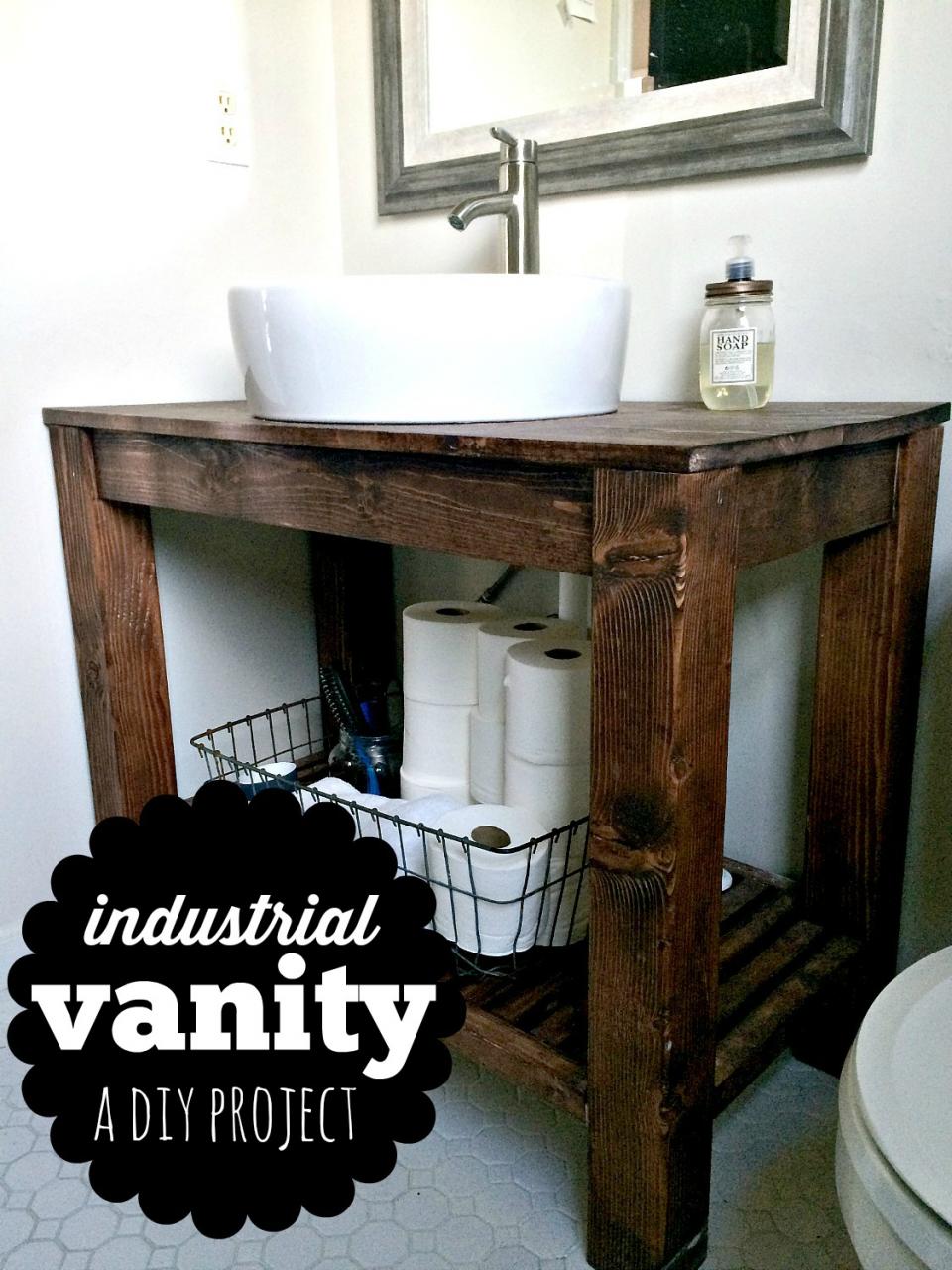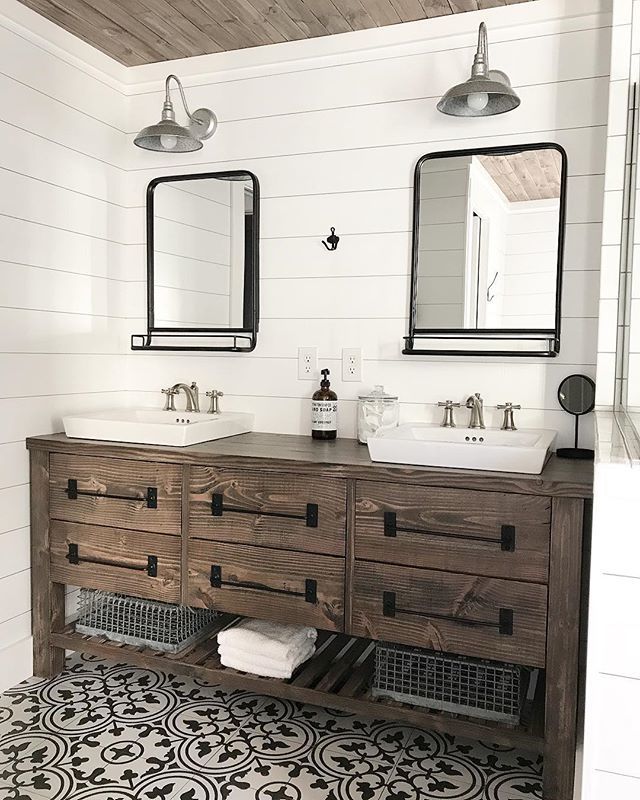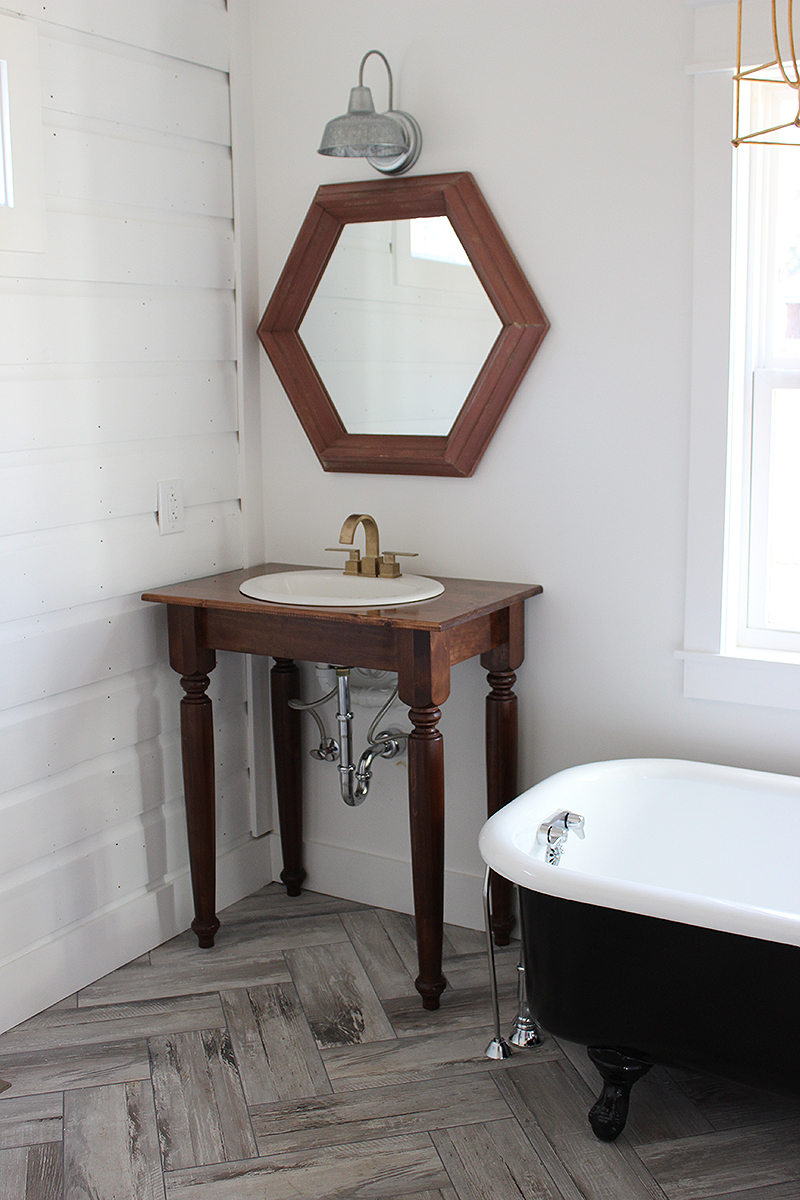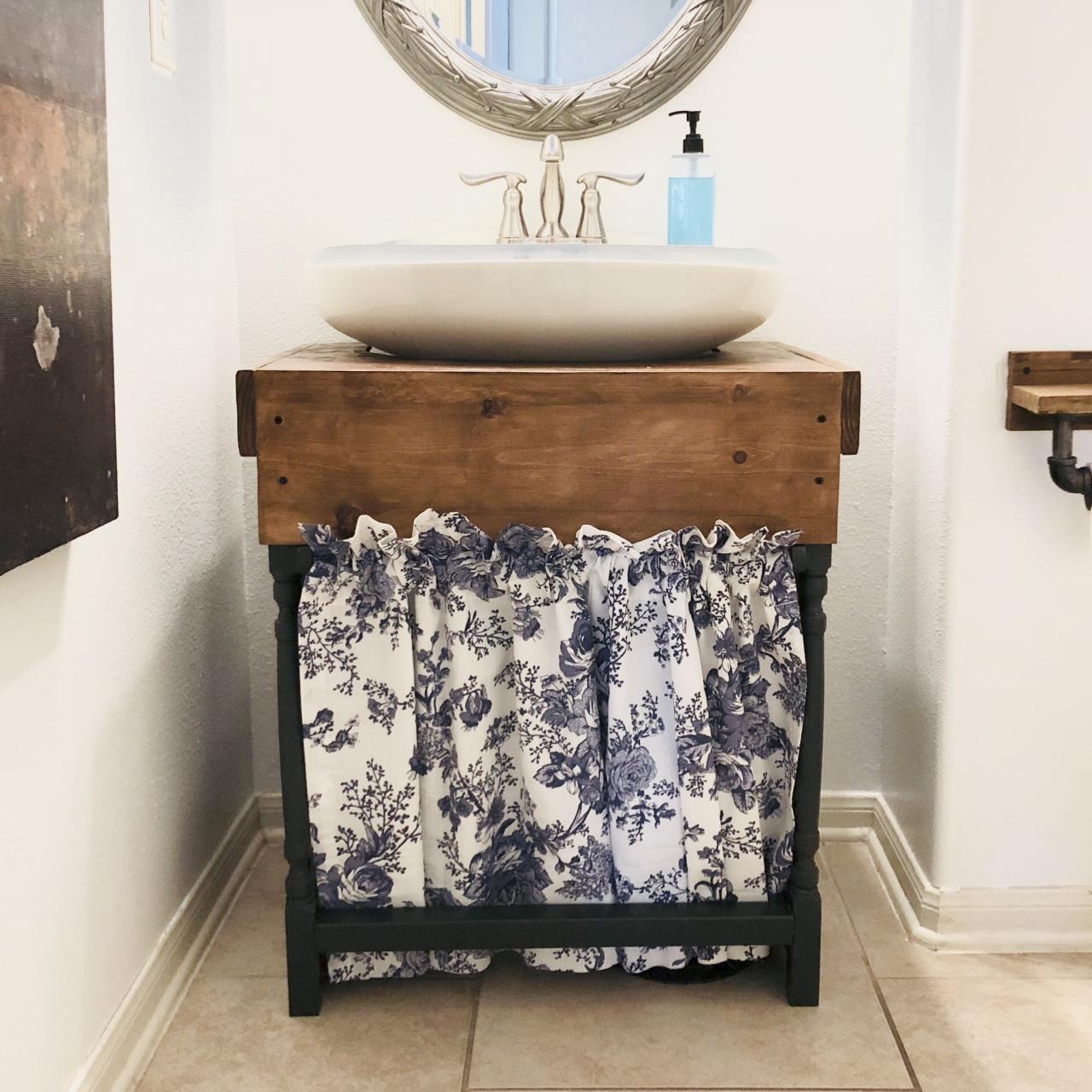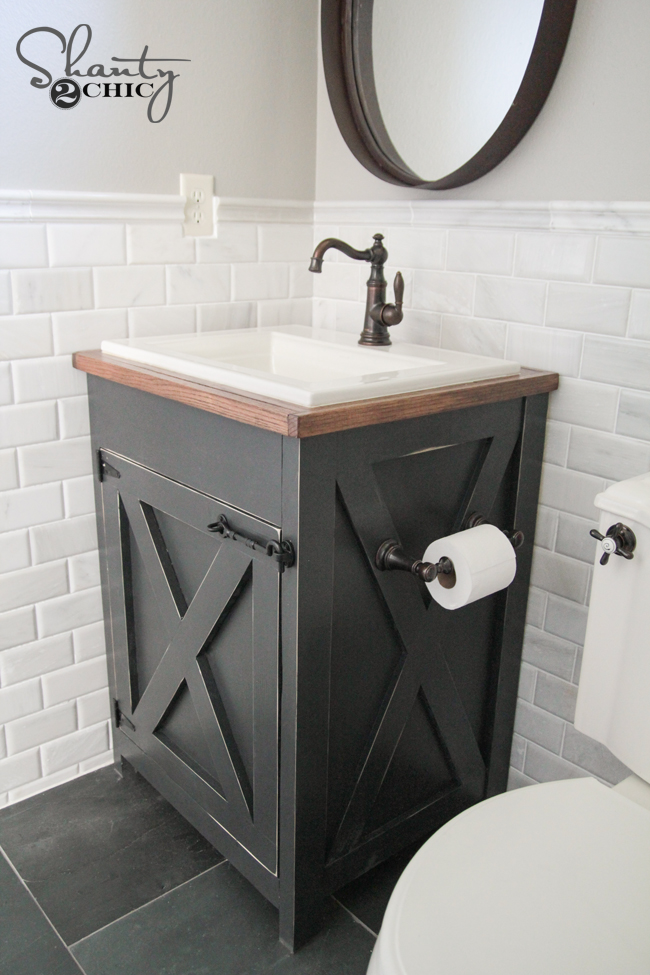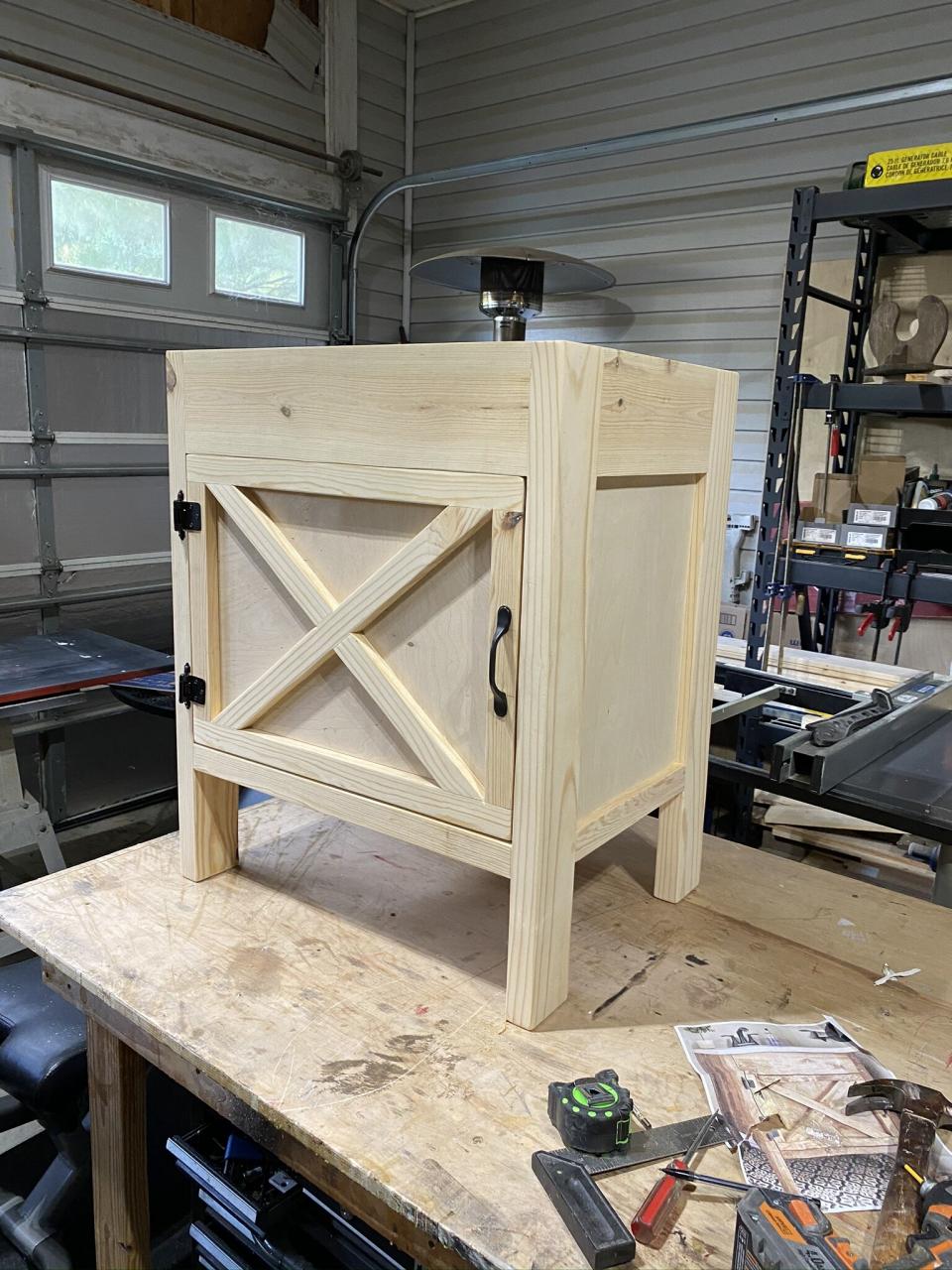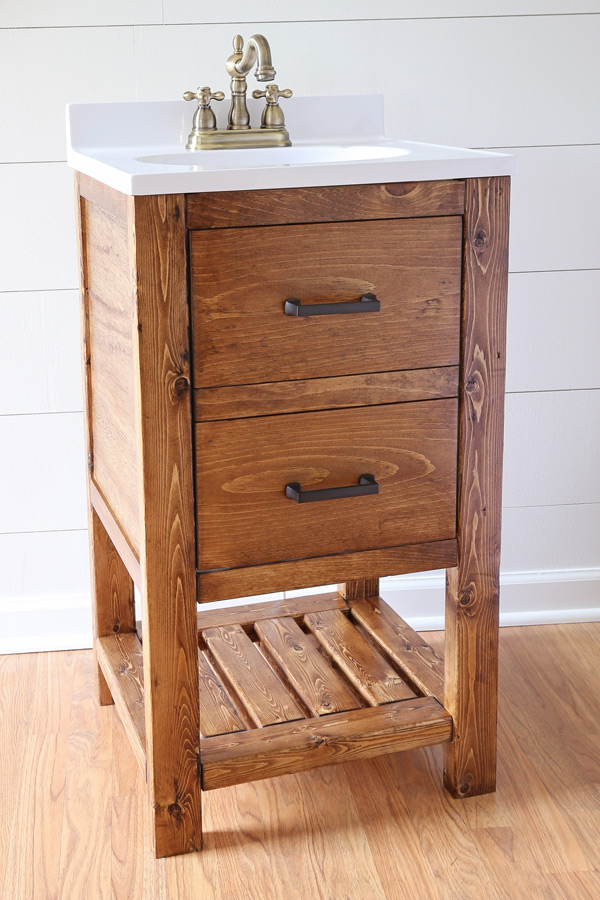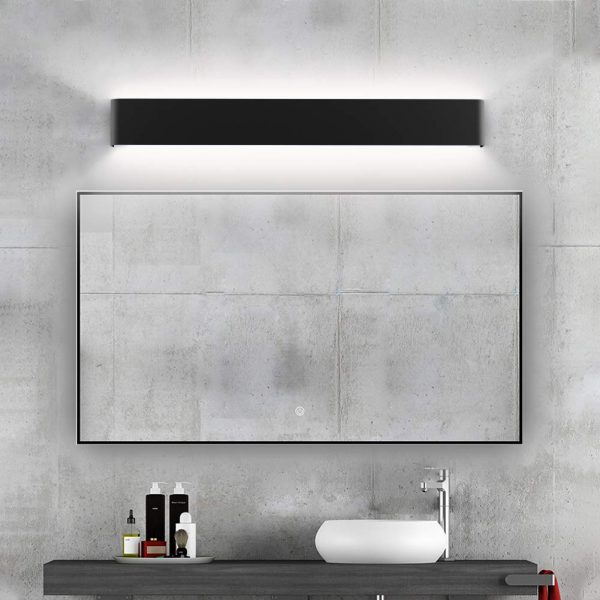Introducing Farmhouse Bathroom Vanities
What is a Farmhouse Bathroom Vanity?
A farmhouse bathroom vanity combines the charm of rural aesthetics with functional design. These vanities are characterized by their rustic appeal, often featuring reclaimed wood, vintage hardware, and a weathered finish. They evoke a sense of nostalgia, reminiscent of country homes and simpler times. Farmhouse bathroom vanities seamlessly blend with modern elements, making them a popular choice for those looking to create a cozy and inviting bathroom space.
Why Choose a Farmhouse Vanity?
Choosing a farmhouse vanity allows you to infuse character and warmth into your bathroom. These vanities are not just about looks; they offer practical benefits, such as ample storage space and durable materials. The timeless design ensures that your bathroom remains stylish and relevant for years to come. Additionally, farmhouse vanities can be customized to fit your space and preferences, making them a versatile option for any bathroom.
Key Features of Farmhouse Vanities
Farmhouse vanities typically feature natural materials like wood and stone. The wood is often distressed or reclaimed, giving the vanity a unique, aged look. Metal accents, such as wrought iron or brass hardware, add to the rustic charm. Open shelving is another common feature, providing both functionality and an opportunity to display decorative items. The overall design is simple yet elegant, with a focus on practicality and durability.
The Versatility of Farmhouse Style
One of the great advantages of farmhouse bathroom vanities is their versatility. They can be adapted to suit various styles, from traditional to contemporary. By mixing and matching different elements, such as modern fixtures with a rustic vanity, you can create a personalized look that reflects your taste. Farmhouse vanities also pair well with various color schemes, from neutral tones to bold hues.
Incorporating Farmhouse Vanities in Small Spaces
Even if you have a small bathroom, you can still enjoy the beauty of a farmhouse vanity. There are many compact designs available that maximize space without compromising on style. Look for vanities with smart storage solutions, such as drawers and shelves, to keep your bathroom organized. A well-chosen farmhouse vanity can make a small bathroom feel cozy and inviting.
Enhancing Your Bathroom with Farmhouse Decor
To complete the farmhouse look, consider incorporating other rustic elements into your bathroom. Wooden shelves, vintage mirrors, and antique fixtures can all contribute to the overall aesthetic. Soft, natural fabrics, like linen or cotton, add warmth and texture. By carefully selecting complementary decor, you can create a cohesive and charming farmhouse bathroom that is both functional and beautiful.

Materials and Tools You’ll Need
Essential Materials for Your Farmhouse Vanity
Building a DIY farmhouse bathroom vanity requires several key materials. The primary material is wood, which can be either reclaimed or new. Reclaimed wood adds authenticity and character, while new wood offers more control over the final look. You’ll also need a countertop material, such as stone, wood, or composite. Additionally, you’ll need screws, nails, wood glue, and sandpaper.
Choosing the Right Wood
The type of wood you choose will significantly impact the appearance and durability of your vanity. Popular choices include oak, pine, and maple. Oak is strong and durable, with a rich grain pattern. Pine is softer and easier to work with, offering a rustic look. Maple is a harder wood with a smooth finish, ideal for a more polished appearance. Reclaimed wood is also an excellent option, providing a unique, weathered look.
Selecting a Countertop Material
Your countertop is a crucial part of your vanity, and there are several materials to choose from. Stone countertops, such as granite or marble, are durable and elegant. Wood countertops add warmth and complement the farmhouse style, though they require regular maintenance. Composite materials, like quartz, offer a modern look with minimal upkeep. Consider your budget, maintenance preferences, and aesthetics when choosing a countertop.
Tools You’ll Need
A variety of tools are essential for building your farmhouse vanity. Basic tools include a tape measure, level, and square for accurate measurements. A circular saw or miter saw is necessary for cutting wood to size. You’ll also need a power drill and screwdriver for assembling the vanity. Clamps can help hold pieces in place while the glue dries. Additionally, a sander or sandpaper is crucial for smoothing the wood and preparing it for finishing.
Safety Equipment
Safety should always be a priority when working with tools and materials. Wear safety glasses to protect your eyes from debris. Ear protection is important when using power tools, as they can be loud. A dust mask will help prevent inhalation of sawdust and other particles. Gloves can protect your hands from splinters and sharp edges. Always follow safety guidelines and use tools properly to avoid accidents.
Sourcing Materials
Finding the right materials for your vanity can be a rewarding part of the process. Local hardware stores and lumber yards are good places to start. Reclaimed wood can often be found at salvage yards or online marketplaces. Consider sustainability when sourcing materials, opting for eco-friendly options when possible. Gathering all your materials and tools before starting your project ensures a smoother building process and helps you stay organized.
Step-by-Step Guide to Building Your Vanity
Planning and Measuring
The first step in building your farmhouse bathroom vanity is planning. Measure your bathroom space to determine the size of the vanity. Consider the height, width, and depth to ensure it fits comfortably. Sketch a design or find inspiration online to visualize the final product. Detailed planning helps prevent mistakes and ensures a smoother building process.
Cutting the Wood
Once you have your measurements and design, it’s time to cut the wood. Use a circular saw or miter saw to cut the pieces according to your plan. Accurate cutting is crucial for a sturdy and well-fitting vanity. Double-check measurements before cutting to avoid wasting materials. Safety is important, so always wear protective gear and follow proper saw handling techniques.
Assembling the Frame
With your wood pieces cut, begin assembling the frame of your vanity. Start with the base, attaching the sides and back using wood glue and screws. Use clamps to hold pieces in place while the glue dries. Ensure the frame is square and level before proceeding. Once the base is complete, add the front and any internal supports for drawers or shelves.
Adding the Countertop
After the frame is assembled, it’s time to add the countertop. If you’re using a pre-made countertop, ensure it fits snugly on the frame. If you’re making your own, cut the material to size and attach it securely. Use screws or brackets to fasten the countertop to the frame. If the countertop is wood, sand it smoothly and apply a finish to protect it from moisture.
Installing Drawers and Shelves
Drawers and shelves add functionality to your vanity. Install drawer slides inside the frame, ensuring they are level and aligned. Build or purchase drawer boxes and attach them to the slides. For shelves, cut wood to the desired size and attach them to the frame using brackets or supports. Make sure all components fit well and operate smoothly.
Finishing Touches
The final step is adding finishing touches to your vanity. Sand the entire piece to smooth any rough edges and prepare it for painting or staining. Apply a finish to the wood, such as paint, stain, or a clear coat, to protect it and enhance its appearance. Attach hardware, such as drawer pulls and knobs, to complete the look. Once everything is dry and secure, your farmhouse bathroom vanity is ready to use.
Choosing the Perfect Sink and Faucet
Types of Sinks
Selecting the right sink for your farmhouse vanity is crucial for both functionality and aesthetics. Popular choices include vessel sinks, undermount sinks, and farmhouse sinks. Vessel sinks sit on top of the countertop, offering a striking and modern look. Undermount sinks are installed below the countertop, providing a seamless appearance. Farmhouse sinks, also known as apron-front sinks, extend slightly past the counter, adding a traditional and rustic touch.
Material Options for Sinks
The material of your sink impacts its durability and appearance. Common options include porcelain, stainless steel, and stone. Porcelain sinks are classic and easy to clean, though they can chip if not handled carefully. Stainless steel sinks are durable and modern, resistant to stains and heat. Stone sinks, such as granite or marble, are elegant and long-lasting but require regular maintenance to prevent staining and damage.
Faucet Styles
The faucet you choose should complement your sink and overall bathroom design. Popular styles for farmhouse vanities include bridge faucets, wall-mounted faucets, and single-handle faucets. Bridge faucets have a vintage look with two handles connected by a bridge. Wall-mounted faucets free up counter space and add a sleek, modern touch. Single-handle faucets are convenient and easy to use, offering a minimalist appearance.
Finishes for Faucets
The finish of your faucet plays a significant role in the overall look of your vanity. Common finishes include chrome, brushed nickel, oil-rubbed bronze, and brass. Chrome is modern and easy to clean, with a shiny appearance. Brushed nickel offers a more subdued look, with a matte finish that resists fingerprints. Oil-rubbed bronze adds a rustic, antique touch, while brass provides a warm, traditional feel. Choose a finish that complements your sink and other hardware.
Matching Sink and Faucet Styles
For a cohesive look, ensure your sink and faucet styles complement each other. A rustic farmhouse sink pairs well with an oil-rubbed bronze or brass faucet. A sleek, modern vessel sink looks great with a chrome or brushed nickel faucet. Consider the overall design of your bathroom when making your selection. Consistency in style and finish helps create a harmonious and visually appealing space.
Installation Considerations
When choosing a sink and faucet, consider the installation process. Some sinks and faucets require specific plumbing configurations or additional support. Ensure your vanity and countertop can accommodate the chosen sink and faucet. If you’re not comfortable with plumbing work, consider hiring a professional for installation. Proper installation is crucial for functionality and longevity, ensuring your vanity performs well and looks great.
Adding Rustic Charm: Paint and Finish Techniques
Choosing the Right Paint or Stain
The finish you choose for your farmhouse vanity can significantly impact its appearance. Paint and stain are the two primary options. Paint offers a solid color, which can be used to create a clean, uniform look. Chalk paint is popular for farmhouse styles, providing a matte, distressed finish. Stain, on the other hand, enhances the natural grain of the wood, adding depth and character. Consider the look you want to achieve and choose a finish that complements your bathroom decor.
Preparing the Surface
Proper preparation is essential for a smooth and lasting finish. Start by sanding the wood to remove any rough spots or old finish. Use a fine-grit sandpaper for a smooth surface. After sanding, clean the wood with a damp cloth to remove dust and debris. If you’re painting, apply a primer to help the paint adhere better. For stain, ensure the wood is clean and dry before applying.
Painting Techniques
When painting your vanity, several techniques can enhance the rustic charm. Distressing is a popular method, which involves lightly sanding the edges and corners after painting to create a worn look. Another technique is layering different colors of paint and sanding through the top layer to reveal the base color, adding depth and character. Dry brushing, where you use a small amount of paint on a dry brush, can create a weathered, textured look.
Staining Techniques
Staining brings out the natural beauty of the wood. Apply the stain with a brush or cloth, following the grain of the wood. Allow the stain to penetrate for the recommended time before wiping off the excess. For a deeper color, apply multiple coats, allowing each to dry thoroughly. Gel stains are thicker and can be applied with less dripping, making them easier to work with. Experiment with different stain colors to achieve the desired effect.
Adding a Protective Finish
A protective finish is crucial to seal and protect the wood from moisture and wear. Polyurethane is a common choice, offering a durable, clear finish. It comes in different sheens, from matte to high gloss. Apply it with a brush, following the grain, and allow each coat to dry thoroughly before applying the next. For a softer, more natural look, consider using a wax finish. It adds a subtle sheen and can be buffed to a smooth, velvety finish.
Decorative Accents
Adding decorative accents can further enhance the rustic charm of your vanity. Consider adding metal corner brackets or decorative trim. You can also use stencils to add patterns or designs to the painted surface. Hardware, such as drawer pulls and knobs, can be chosen to complement the finish. Antique or vintage hardware adds an authentic touch, while modern hardware can create an interesting contrast. These small details can make a big impact on the overall look of your vanity.
Decorative Touches: Mirrors, Lights, and Accessories
Choosing the Right Mirror
The mirror you choose can significantly impact the look and feel of your bathroom. For a farmhouse vanity, consider a mirror with a rustic frame, such as reclaimed wood or distressed metal. Round or oval mirrors add a soft, classic touch, while rectangular mirrors offer a more modern look. You can also opt for a mirror with built-in storage, such as shelves or a cabinet, to maximize functionality.
Lighting Options
Proper lighting is essential for both functionality and ambiance. Wall sconces on either side of the mirror provide a balanced, flattering light. Choose fixtures with a vintage or industrial look to complement the farmhouse style. Pendant lights are another great option, adding a touch of elegance. Consider using warm, soft bulbs to create a cozy atmosphere. If you prefer a more modern look, recessed lighting can provide a clean, unobtrusive light source.
Incorporating Natural Elements
Adding natural elements to your bathroom can enhance the farmhouse feel. Consider incorporating plants, such as potted herbs or succulents, to add a touch of greenery. Wooden accessories, such as soap dishes or toothbrush holders, can complement your vanity. You can also use natural textiles, such as linen or cotton towels, to add warmth and texture. These elements create a harmonious and inviting space.
Functional Accessories
Functional accessories can enhance both the look and usability of your bathroom. Consider adding a rustic ladder for towel storage, which can also serve as a decorative element. Baskets or crates made from natural materials provide stylish storage solutions. A vintage stool or chair can add character and provide a place to sit or store items. These accessories blend form and function, enhancing the overall aesthetic.
Personalized Touches
Personalized touches make your bathroom unique and reflect your style. Consider adding artwork, such as vintage prints or botanical illustrations, to the walls. Family heirlooms or handmade items can add sentimental value and charm. You can also incorporate personalized monograms or initials on towels or accessories. These small details make your bathroom feel like a true reflection of your personality.
Coordinating with the Overall Decor
Ensure that your decorative touches coordinate with the overall decor of your bathroom. Consistency in color, material, and style creates a cohesive and harmonious look. Choose accessories that complement the finish and style of your vanity. For example, if your vanity has a distressed wood finish, opt for accessories with a similar rustic feel. A well-coordinated bathroom feels balanced and inviting, making it a pleasant space to spend time in.
Maintaining and Caring Tips
Regular Cleaning
Regular cleaning is essential to keep your farmhouse vanity looking its best. Use a gentle cleaner suitable for the finish of your vanity. For painted surfaces, a mild soap and water solution works well. For stained wood, use a wood cleaner or a mixture of vinegar and water. Avoid harsh chemicals or abrasive cleaners that can damage the finish. Wipe down the vanity regularly to prevent dust and grime buildup.
Protecting the Finish
Protecting the finish of your vanity helps maintain its appearance and durability. For wood finishes, consider applying furniture wax or polish periodically to keep the wood nourished and protected. If you have a painted vanity, touch up any chips or scratches with matching paint. Using coasters and mats can help prevent water stains and damage. Avoid placing hot items directly on the vanity surface to prevent discoloration.
Addressing Wear and Tear
Over time, your vanity may show signs of wear and tear. Regularly check for loose hardware, such as drawer pulls or knobs, and tighten them as needed. Inspect the vanity for any signs of water damage or warping, especially around the sink area. Address any issues promptly to prevent further damage. Reapply sealant or finish as needed to maintain the protective layer.
Preventing Moisture Damage
Moisture is a common concern in bathrooms, and taking steps to prevent damage is crucial. Ensure proper ventilation in your bathroom to reduce humidity levels. Use a fan or dehumidifier if necessary. Wipe up any water spills immediately to prevent water from seeping into the wood. If you have a wood countertop, consider using a waterproof sealant to protect it from moisture.
Seasonal Maintenance
Performing seasonal maintenance helps keep your vanity in top condition. In the spring and fall, deep clean the vanity and inspect for any damage or wear. Reapply protective finishes if needed. Check the plumbing connections to ensure there are no leaks. Seasonal maintenance helps catch any potential issues early and keeps your vanity looking great year-round.
Long-Term Care
With proper care, your farmhouse vanity can last for many years. Establish a regular cleaning and maintenance routine to keep it in good condition. Avoid placing heavy or sharp objects on the vanity surface that could cause damage. If you notice any significant damage or wear, consider refinishing or repairing the vanity to extend its lifespan. Taking care of your vanity ensures it remains a beautiful and functional centerpiece in your bathroom for years to come.
DIY Bathroom Vanity for Cheap
Related Posts:
